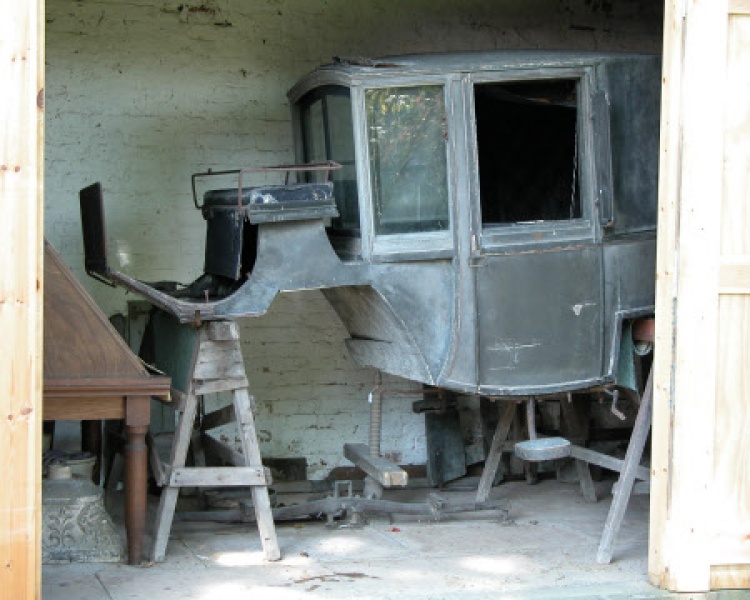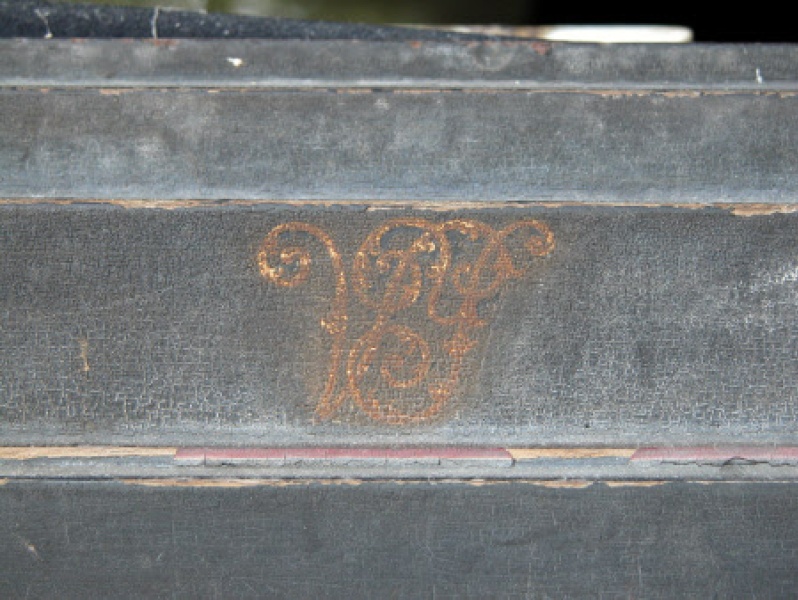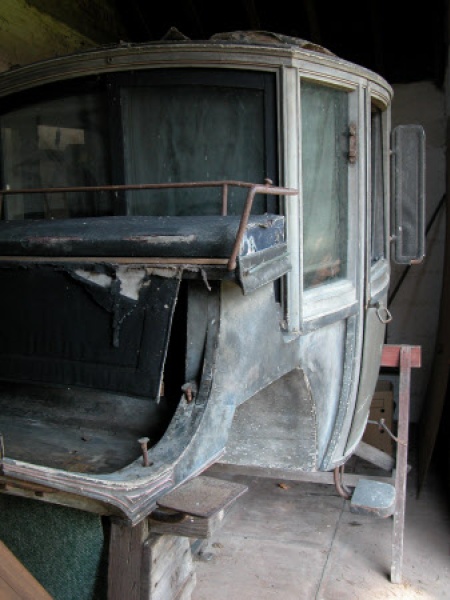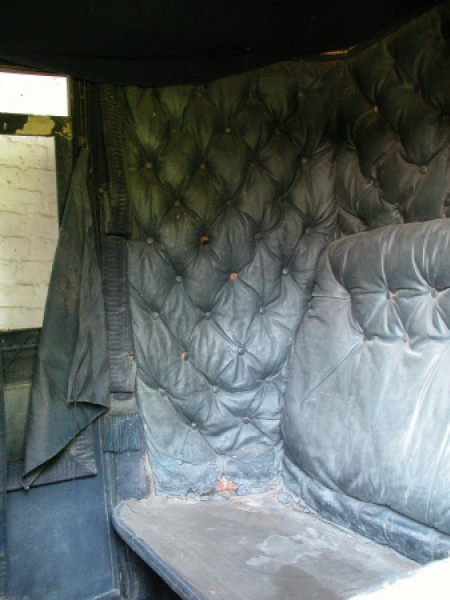Use the dots above to scroll through images.
Listed in 1 collection
Listed at 1 museum
Listed for 1 maker
Quick Details
Carriage Type
Clarence
Date of Production
circa 1860
Accession or Inventory Number
NT 1152615
Materials used
Paint, Wood, Iron, Leather, Wool Box Cloth, BrassSummary of Clarence
A carriage that is long since past its prime.
Country estates and town households would have had a fleet of carriages that would include a Brougham or a Clarence. The Clarence was introduced in the 1840's and named after the Duke of Clarence. It was originally a small family carriage that could seat four people. The Growler developed from the Clarence, this was sturdy and workmanlike, built to work as a cab on city streets, ‘growling’ across the cobbles, hence the name.
The Clarence is used on a daily basis in the Royal Mews at Buckingham Palace.
Dimensions
Height: 6ft 2 ¾”
Length: 8ft
Width: 4ft 7”
Full description
This Clarence is in a bit of a sorry state having lost its under carriage and wheels, by the looks of it, some time ago. It now sits, supported on various jacks and trestles in a shed on the Erddig estate.
The remains are of the standard form for a Clarence. It has an angular profile which is softened a little by the slightly domed roof. The coachman’s seat has single seat rails with knobs for attaching a leather apron on each side rail. The seat is served with a leather skirt with brass beading. A single long cushion is upholstered in blue box cloth and a seat drop is in the same material. To the side of the footboard, on each side, is a step consisting of a square jagged tread. Attached to the front of the footboard is a leather dashboard with iron grab handles on each side.
The doors are hung on concealed hinges and have brass loop handles. Large foot treads are supported on a bracket bolted to the underside of the carriage, their covers are attached to the base of the doors. The sliding window in the offside door is has a frame covered with blue wool cloth, the nearside sliding window is missing. At the front of the Clarence is a large window with a curved upper edge and there is a window on each side in the upper front panels. Bolted to the side panels behind the doors are straight leather splashguards.
A nicely shaped splinter bar is stored on the floor beneath the carriage. It is compassed up in the centre with the futchells under the bar.
Inside the carriage is fitted with two seats. The side panels are covered with black buttoned leather as is the cushion on the front seat. The rear seat is missing its cushion. The floor is covered with a dark blue plain carpet. On the doors are blue box cloth. The broad lace has a stripy pattern on the interior handles and a floral pattern on the sliding window drops, which is not quite right. The front and side windows have blue silk roller blinds. All of the interior furniture is of bone. The interior is terribly dirty but mostly intact.
Due to the condition of this carriage it is a challenge to really see what the original colour was. It seems to have been a very dark green with red lining. The initials ‘VY’ are painted in beautiful scrolled lettering on each door.
Inscriptions
Painted on each door: ‘VY’
Condition report
It has to be said that this carriage is in poor condition. The undercarriage and wheels are missing with the exception of the splinter bar. The interior is mostly complete with the exception of one of the seat cushions, but it is very dirty and showing signs of moth damage. The carriage body has woodworm.
Access information
This Clarence is in the care of The National Trust, Erddig.
Erddig
Wrexham
LL13 0YT
Picture credit
The National Trust / Amy Bracey / Robert Lovell

 Carriage Foundation
Carriage Foundation


